Choosing a mortar mixer
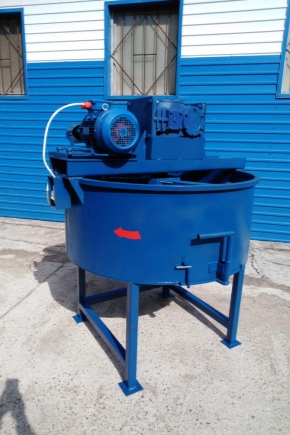
With relatively small volumes, it is possible to prepare a mixture for various construction works manually. However, even in such a situation, we will talk about significant time costs and physical efforts. Based on this, the question of choosing a mortar mixer remains relevant for many. This refers to devices used in everyday life, as well as at large construction sites.
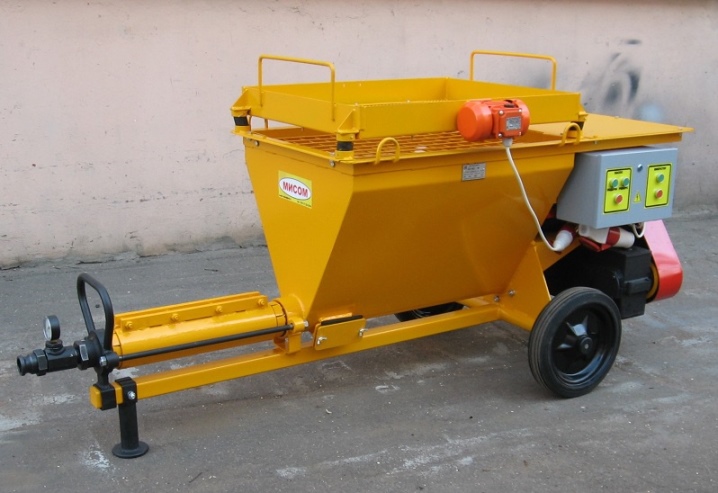
Features and purpose
Initially, the very name of the devices indicates what they serve. The principle of operation of the mortar mixer is as simple as possible. All components of the future mixture are loaded into a container of the appropriate volume, in which they are mixed by the blades installed inside. At the same time, electric motors are installed on modern models in most cases. Naturally, there are also manual samples of equipment, but they are in less and less demand.
Modifications of the described devices presented now on the market can be completed with a whole list of additional elements that determine their functionality. In this case, we are talking, for example, about screens for sieving dry and semi-dry mixtures. By the way, the finished solution can simply be poured out of the mixer or fed into the pump sleeve with flow models.
It is important to take into account that concrete mixers function according to a similar principle. Moreover, the difference between these two types of equipment comes down to the features of the components used. As a rule, concrete mixers are loaded with components of solutions having particle sizes from 1.5 to 2 cm.
If we are talking about a smaller fraction, then it will be more rational to use mortar mixers.
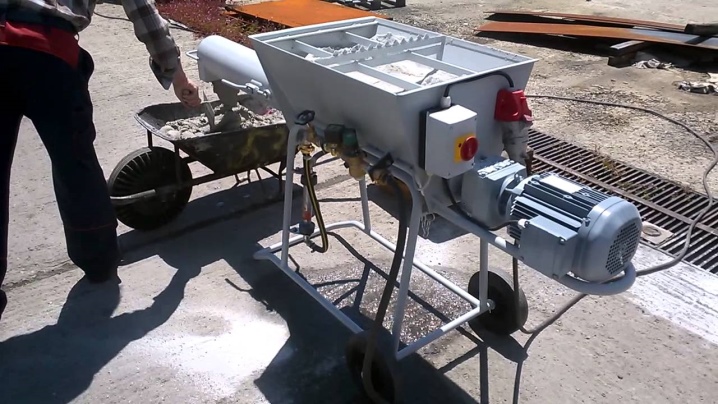
Species overview
All models of mortar mixers available today are united by the maximum simplicity of the principle of operation and, therefore, operation. Wherein there are different types of such devices, ranging from household ones in the form of attachments for perforators and mini-attachments for drills and ending with large-sized mobile or stationary devices.
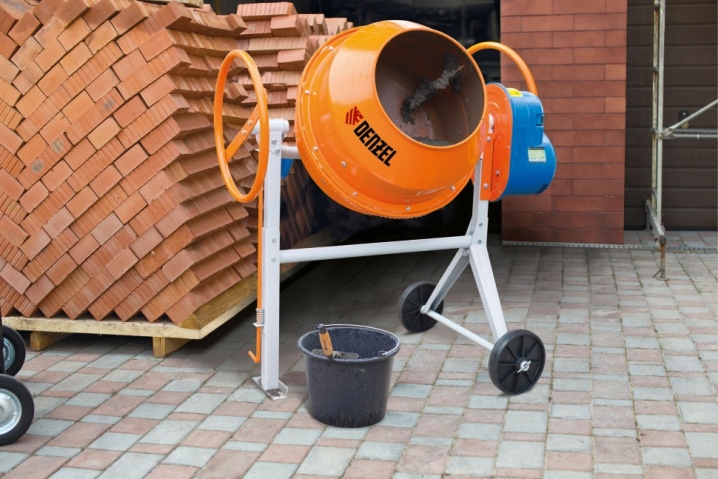
By the principle of work
First of all, attention should be paid to the categories of mixers, depending on their principle of operation. In this case, we are talking about two types of action - constant, that is, continuous, and periodic, that is, cyclical. The first type is powerful equipment, usually used on large construction sites. It has the appropriate performance and is capable of mixing and feeding mixtures for a long time.
Batch mixers differ from their older counterparts in a simpler design. It is about mixing solutions and feeding them with periodic breaks. Such models will be the best choice for private construction and relatively small objects.
Their main advantage is their affordable cost.
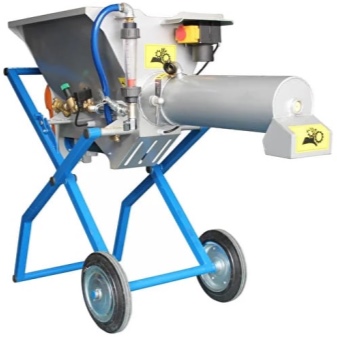
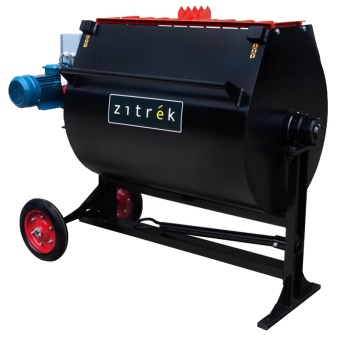
By mixing method
As already noted, in the type of mixers under consideration for different building mixtures, the components of the latter are moved with the help of blades. In turn, these structural elements can be different. Taking into account this nuance, the equipment is divided into gravitational and forced action (screw). The latter type is distinguished by the presence of a stationary drum with blades rotating inside it. In practice, such installations are much more efficient and are widely used for the preparation of almost any type of solutions, characterized by high quality.
At the same time, this functionality provides for equipping with engines with the appropriate power.
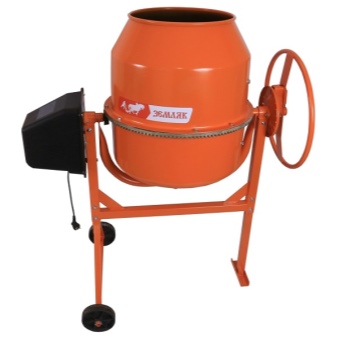
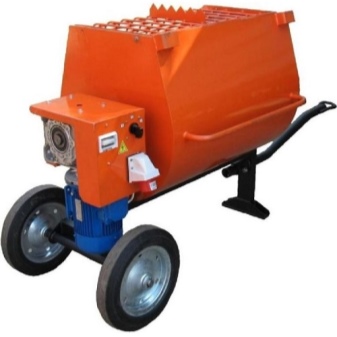
From the point of view of such a design feature as the positioning of the unit body, they are divided into two types.
- Horizontal shaft units. In this case, the equipment is made in the form of a "lying" cylinder, at the ends of which there is a shaft (shafts) with fixed blades. Such modifications are distinguished by high-quality mixing of almost any components of the future mixture. The only drawback (not very significant) is that they are a little heavier than their counterparts.
- Agitators with vertical shaft (s). A key design feature is the presence of a hollow cylinder insert in the central part of the tank. This part prevents the accumulation of unmixed components of the solution. Such models of mixers are quite widespread due to their versatility and maximum ease of use.
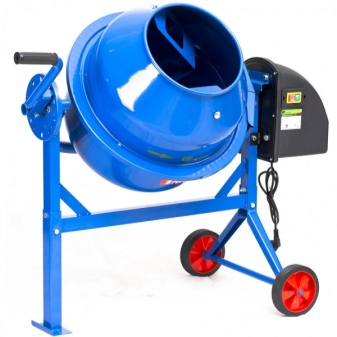
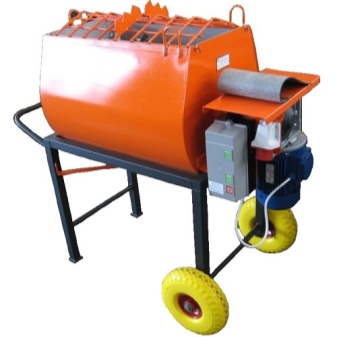
Gravity mixers work a little differently. The main difference lies in the immobility of the blades around which the drum rotates. It turns out that the contents of the container under the influence of gravity falls in the process of rotation from one wall to another. In this case, the components inevitably fall on the blades, due to which they are mixed. The intensity and efficiency of the whole process is regulated by changing the angle of inclination of the drum in relation to the vertical. In addition, the number, size and shape of the blades and the speed of rotation are key factors.
For many, the financial side of the issue is at the forefront, and therefore it should be noted that gravity stirrers are relatively inexpensive. Equally important is the ease of use of the equipment. And you should also take into account the efficiency, since such models are equipped with less powerful electric motors compared to auger motors. For example, for drums with a capacity of 130 and 180 liters, 650- and 900-watt motors, respectively, will be sufficient.
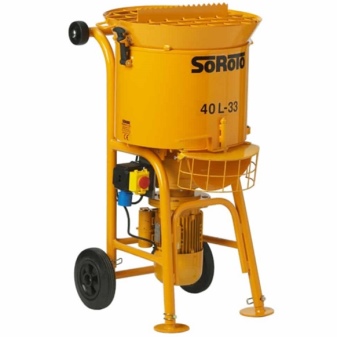
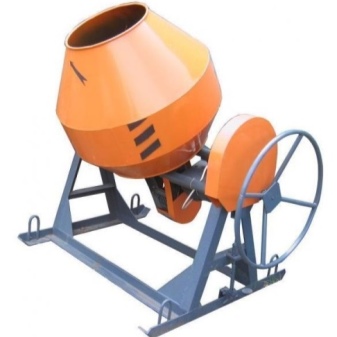
By transmission type
All mortar mixer models on the market in terms of design features and equipment subdivided into two categories - crowned and gear. By the way, in the latter, the gearbox itself is placed in a separate casing in order to protect it from dirt and damage. In parallel, this allows you to significantly reduce the noise level emitted by the unit during operation. At the same time, the repair and replacement of this unit is significantly complicated, and the cost of such work also increases.
Crowned or belt models have one clear feature. We are talking about the presence of a crown with teeth and a gear on the rim of the drum. Such a mechanism is practically not protected in any way from the ingress of dirt and particles of the mixture. However, its repair and maintenance will be much easier and cheaper. Particular attention should be paid to the material from which the crown is made.
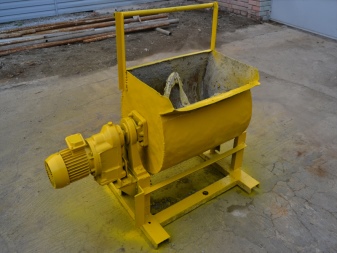
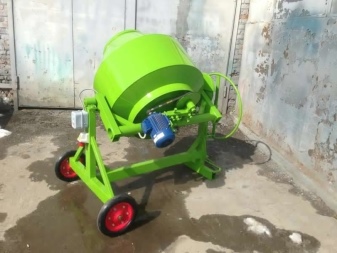
At the moment, the following three options can be distinguished.
- Steel. The optimal choice for those who focus on strength, reliability and durability. However, you need to remember about the financial component, as such mixers will cost more.
- Cast iron. In terms of strength, the material is significantly inferior to steel. Moreover, it can be called the "golden mean" in terms of the ratio of price and basic performance indicators.
- Plastic - this is the most budgetary option for equipping mortar mixers. Against the background of obvious shortcomings, two key advantages can be distinguished - price and low noise level.Taking into account all the characteristics, such models are suitable mainly for private repairs.
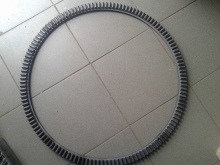
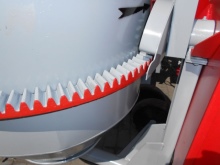

Possible volume
Nowadays, you can find a variety of modifications of the described devices. Moreover, depending on the purpose and operating conditions, they are equipped with drums with different capacities. So, you can find compact mixers with a volume of 65 liters and solid units, the drums of which can accommodate several hundred liters. It is important to take into account that the real volume of the ready-made solution will be less than the specified parameter, and this difference can be from 20 to 40%. Conventionally, mortar mixers in this case are divided into a number of categories.
- Up to 100 liters. Models designed for rare performance of work with small amounts of mixtures.
- Up to 150 liters. A universal option that, due to the optimal ratio of price, quality and performance, is equally suitable for home craftsmen and professional builders.
- From 150 to 300 liters. In this case, we are talking about professional equipment, which is distinguished by its solid weight and an impressive price.
- From 300 liters. Such installations are used on large construction sites.
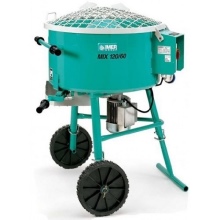
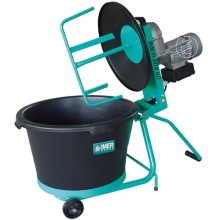

Criterias of choice
First of all, when selecting this type of construction equipment, attention is paid to the power of the power plant. This parameter directly depends on the volume of the drum of the mortar mixer. When studying the characteristics of specific models, it is recommended to keep in mind some important points.
- For household appliances, an engine with a power of 1 kW will suffice. By the way, it is quite difficult to find a device powered by 220 V that is more powerful than a kilowatt. Most often, devices with a maximum of 600-700 watts are purchased for such purposes.
- More powerful installations, as a rule, are connected to a network with a voltage of 380 V. They are capable of functioning at maximum loads and practically without interruption for a long time.
In addition to power, other characteristics are included in the list of key criteria.
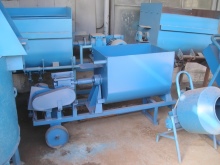

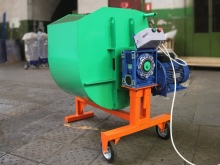
type of drive
The vast majority of modern mortar mixers are equipped with electrical power units that are characterized by practicality and reliability. Manual units are already becoming history, as their operation involves significant physical and time costs against the backdrop of relatively low productivity. And also on sale you can find models with pneumatic and hydraulic drives, working by creating air and liquid pressure, respectively. However, such devices are expensive, including maintenance. Motor-driven agitators are powered by gasoline or diesel internal combustion engines.
Such a solution is not the most common, since its main disadvantages are fuel costs and the inability to operate indoors.
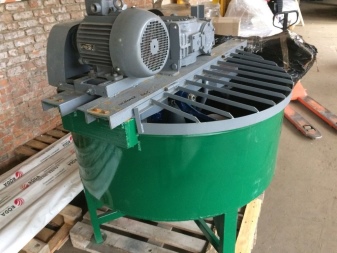
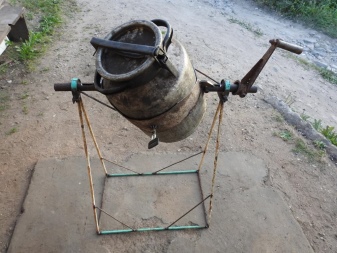
Drum thickness
In this case, the thicker, the better, but, of course, within reasonable limits, since the weight and, therefore, the load on the drive directly depends on this parameter.
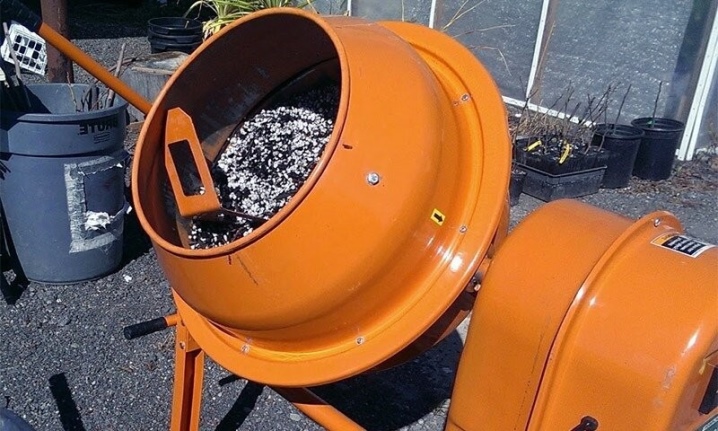
Equipment color
It is noteworthy that in this case we are not talking about the aesthetic component, but about safety. Coloring of mixers, as well as other equipment, in bright colors makes them as visible as possible at a great distance and in any weather.
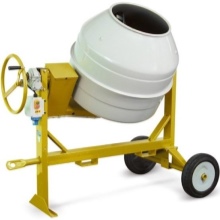

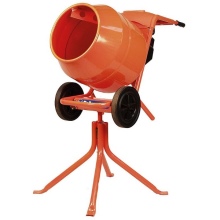
Seasonality of operation
It should be noted that many models are designed for use at positive temperatures. but there are also all-season units that effectively cope with the assigned tasks in almost any conditions.
Naturally, such models, taking into account the quality of the materials, will cost more.
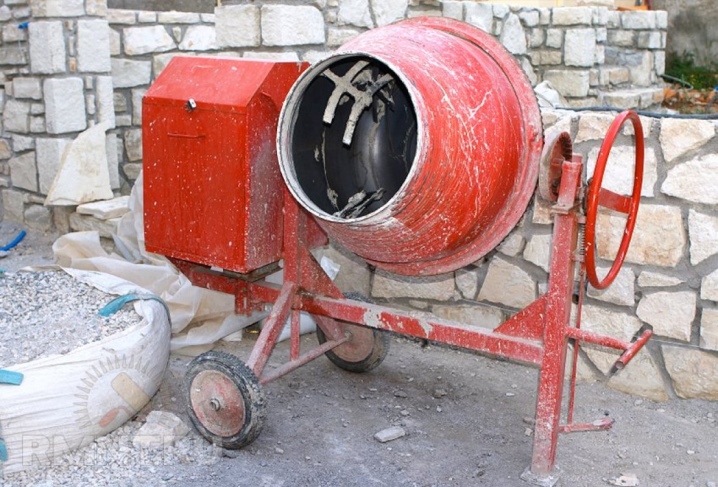
Installation mobility
The presence of wheels greatly simplifies the operation of the equipment. At the same time, powerful and high-performance units are made stationary.
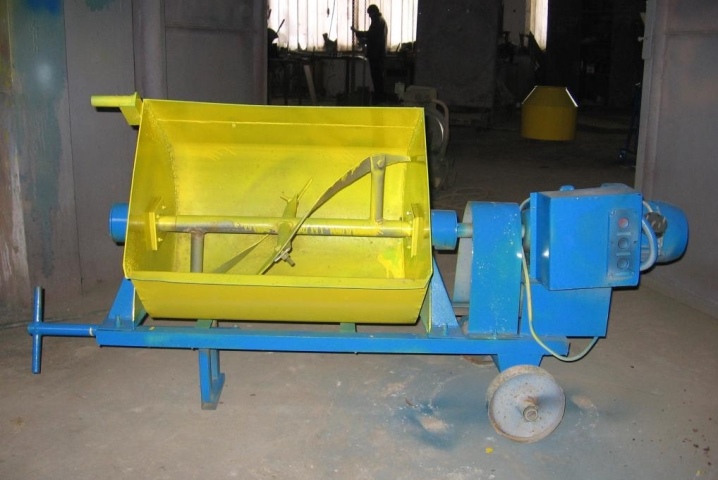
Methods for loading components and unloading ready-made mixtures
More expensive models of equipment are equipped with automated systems.
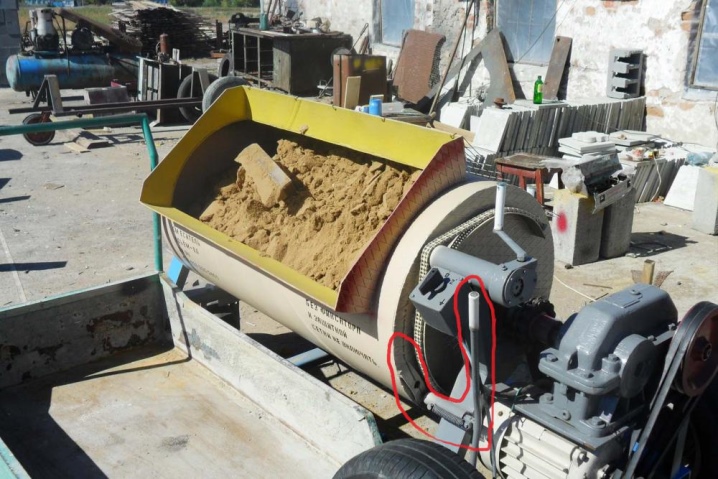
Availability of the function of emergency shutdown of the drive in case of overloads
This minimizes the risk of mixer failure.
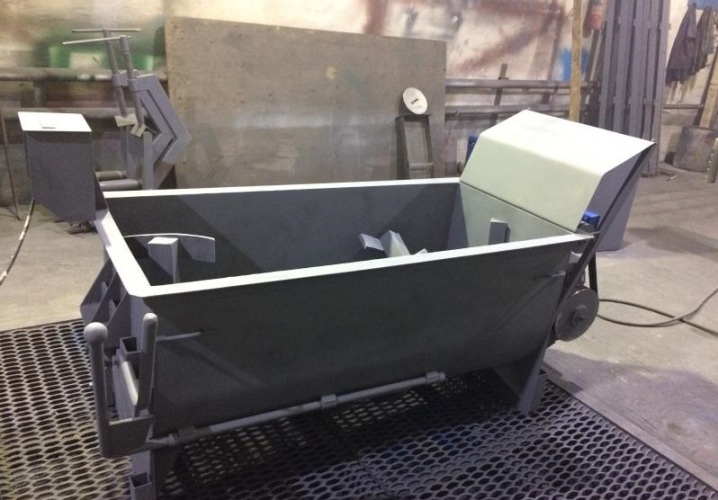
It should be recalled that the determining factor is most often the potential volume of work. Based on this, home craftsmen make a choice in favor of the most compact models.
At the same time, professional builders prefer more efficient units.
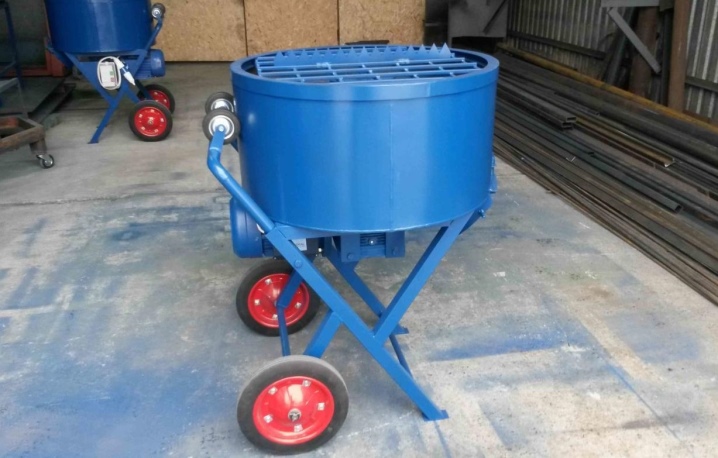













The comment was sent successfully.